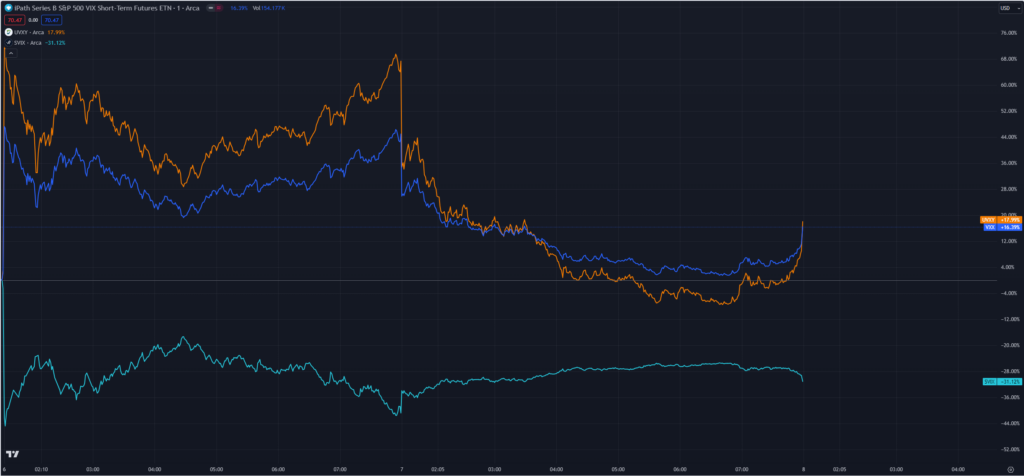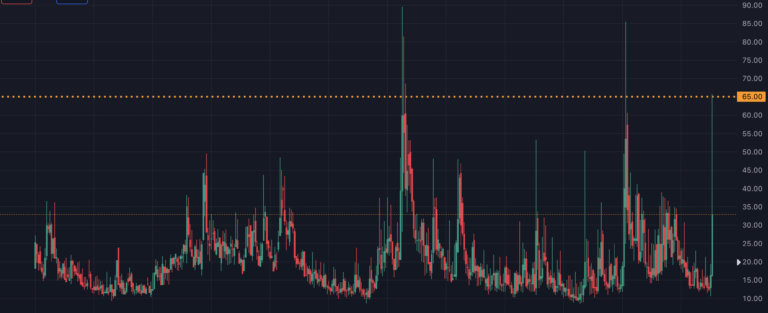Is Beta Slippage Your Friend Or Foe? Maximise Returns By Being In The Know
Today, I want to dive into a topic that can significantly impact your returns when trading volatility exchange-traded products (ETPs)—beta slippage. Understanding this concept can help you fine-tune the efficiency of your volatility trades and make more informed decisions about your ETP selection. So, let’s break it down and explore how beta slippage influences the performance of different volatility ETPs like VXX, UVXY, and SVIX.
First off, what exactly is beta slippage? At its core, beta slippage refers to the erosion of returns that occurs when an Exchange-Traded Product (ETP) tracks the daily percentage changes of an underlying index or asset. This phenomenon is particularly relevant for leveraged and inverse ETPs, which aim to magnify the daily returns of their benchmarks. The compounding effect of these daily returns, especially in volatile markets, can lead to significant deviations from the expected performance over time, resulting in what is known as beta slippage.
To understand this more deeply, consider how leveraged and inverse ETPs are designed. These products typically aim to deliver a multiple (e.g., 2x, 1.5x, -1x) of the daily performance of an underlying index. For example, a 2x leveraged ETP (such as UVIX) would aim to deliver twice the daily return of the index it tracks. Sounds straightforward, right? However, the key point here is that the leverage is applied on a daily basis. Imagine a scenario where the underlying index increases by 10% on Day 1 and then decreases by 10% on Day 2. A non-leveraged ETP would see its value return to slightly below the original level after these two days, as the gain and the subsequent loss would more or less offset each other. However, a 2x leveraged ETP would not simply return to its original value. Instead, it would experience a compounding effect: an initial 20% gain followed by a 20% loss, which would result in a bigger net loss over the two-day period. This is because the loss on the second day is applied to a higher base value, leading to a larger absolute decline. This compounding effect is the essence of beta slippage.
The impact of beta slippage becomes more pronounced over longer periods and in more volatile markets. In a highly volatile market, the daily ups and downs can cause the value of a leveraged ETP to erode significantly, even if the underlying index ends up at the same level after a certain period. This erosion is not due to any inherent flaw in the ETP but rather a mathematical consequence of daily compounding.
Let’s compare how it affects the most popular volatility ETPs: VXX, UVXY, and SVIX. To illustrate this, let’s take a look at the performance differences from March 30th, 2022 (around the inception of SVIX), to August 7th, 2024.

As you can see from the chart, over a long duration, shorting VXX would have provided almost twice the return of being long SVIX. But what about over a shorter time frame? Let’s examine the performance during a recent volatility recovery from August 5th to August 6th, close to close.

If you were unfortunate enough to be long SVIX during this period, you would currently be down about -31%, whereas VXX and UVXY would have you around -17%. That’s after about a 70% drawdown for UVXY compared to SVIX’s 45%.
So, why bother with SVIX if it seems to perform poorly during certain periods? Well, it all comes down to the age-old concept of higher risk, higher potential return. An SVIX trade can theoretically only go to zero, meaning you could lose 100% of your position. However, short selling VXX or UVXY exposes you to theoretically unlimited risk. As an extreme example, a short UVXY trade during the COVID-19 crash could have resulted in a drawdown of over 192% of your position, depending on your entry point.
Ultimately, the choice between these ETPs boils down to your individual risk/reward appetite. If you’re comfortable with the potential for higher returns and can stomach the associated risks, then VXX or UVXY might be a suitable option for you. On the other hand, if you prefer a more conservative approach, SVIX could be a better fit.




